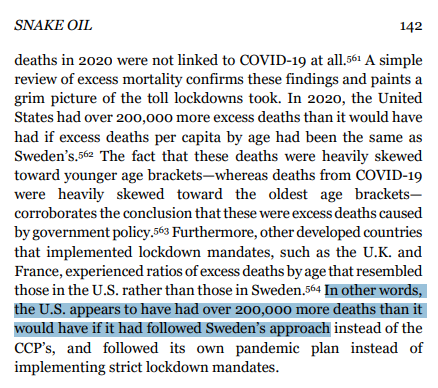A new study from the National Bureau of Economic Research, cited in The Australian and in a New York Times op-ed, reveals over 170,000 non-Covid excess deaths among young Americans in 2020 and 2021, most likely attributable to measures implemented to combat the coronavirus—i.e., deaths by lockdown.
The Economist puts the number even higher, at 199,000. This rate of non-Covid excess deaths among young people holds constant across European Union countries that employed strict lockdown measures, but disappears for Sweden, which did not employ such measures.
According to the NBER study:
Summing our estimates across causes and age groups, we estimate 171,000 excess non-Covid deaths through the end of 2021 plus 72,000 unmeasured Covid deaths. The Economist has assembled national-level mortality data from around the world and obtains a similar U.S. estimate, which is 199,000 (including any unmeasured Covid) or about 60 persons per 100,000 population (Global Change Data Lab 2022). For the European Union as a whole, the estimate is near-identical at 64 non-Covid excess deaths per 100K. In contrast, the estimate for Sweden is -33, meaning that non-Covid causes of death were somewhat low during the pandemic. We suspect that some of the international differences are due to the standard used to designate a death as Covid, but perhaps also Sweden’s result is related to minimizing the disruption of its citizen’s normal lifestyles.
Hauntingly, the results of the NBER and Economist studies are a near-perfect match of the simple calculations of lockdown deaths performed in my book, Snake Oil.


As the New York Times notes euphemistically: “The rate of death from all causes for younger adults has risen by a bigger percentage than has the rate of death from all causes for old people.” It’s nice of the New York Times to finally print this fact, but they would appear to be, euphemistically, a day late and a dollar short—the “dollar” in this case being 200,000 young American lives.
Join the conversation:


Published under a Creative Commons Attribution 4.0 International License
For reprints, please set the canonical link back to the original Brownstone Institute Article and Author.









